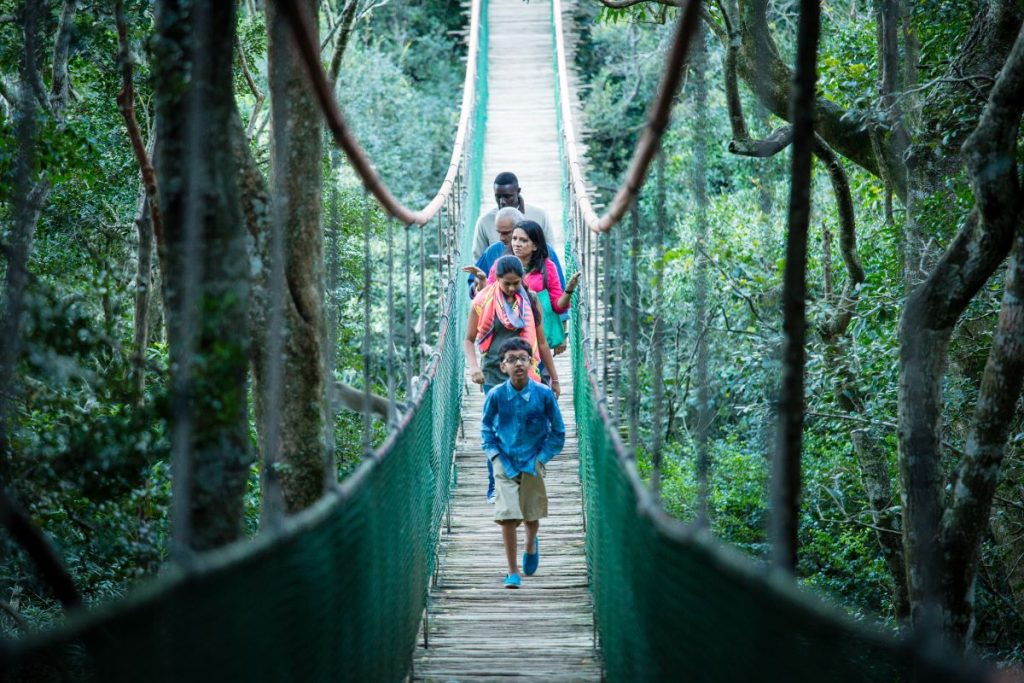Summarize this content to 2000 words in 6 paragraphs
South Africa’s new Trusted Tour Operator Scheme (TTOS) for Indian travelers came into effect on Monday. The scheme, which was announced last year, is an initiative that aims to provide travelers with credible points of contact who clearly understand the visa processes of South Africa.
Here’s some context: Last year, South Africa decided to launch this scheme for Indian and Chinese travelers to capitalize on the growing outbound potential of these markets. And solving the visa issue was key.
South Africa therefore decided to onboard trusted tour operators to its program as a point of contact for travelers in India. “Indian visitors and businesses will be able to go directly to one of these tour operators for their visa applications,” South African Tourism Minister Patricia de Lille had earlier said.
South Africa also asked the Indian tourism ministry for their database of over 5,000 accredited tour operators to invite them to join the scheme.
Along with this, South Africa has launched an electronic travel authorization system for Indian travelers, allowing individual travelers to apply for visas online and get a visa in a couple of days.
“We have seen that there is a massive increase of outbound travelers to countries nearby where visa regulations are simpler. Now that we are transforming our visa regime, we are expecting a similar response from India,” de Lille told Skift in an interview.
India is key to South Africa’s tourism plans. In 2023, India accounted for 4% of the country’s total arrivals. In 2025, it is looking to push this to at least 10%, de Lille said. For this, South Africa is looking to work with players in the Meetings, Incentives, Conferences, and Exhibitions (MICE) segment and tour operators. It is also carrying out joint marketing campaigns with India.
Flight Connectivity: De Lille along with a delegation from South Africa Tourism visited India last month to solve some key issues that were stopping Indians from traveling to the country, including flight connectivity. The team spoke with Indian airlines to enhance direct flights between India and South Africa.
“I had a meeting with Air India and the response was very positive. They said that it was not a question of if but of when they would commence direct flights, as they are currently awaiting for aircraft delivery. IndiGo, which is already flying to Nairobi and Mauritius, has also shown a favorable response,” she said.
She shared that South African Airways will also be looking at the possibility of signing codeshare agreements with Indian airlines.
Financially troubled SpiceJet also made a proposal of operating direct charter flights for large groups of around 200 passengers from India.
Indian Budget: What Does The Travel Sector Want?
Across the Union Budgets over the past few years, the travel industry has been left disappointed. Apart from two tax reforms and destination development in Bihar and Odisha, the sector did not receive much last year too.
Now, as the announcement of the budget for the 2026 financial year is around the corner, players in the travel sector have once again renewed their hopes for an industry status to the sector, especially because travel and tourism are two of the largest industries in India, with a total contribution of about $199.6 billion to the country’s gross domestic product (GDP).
The industry status will allow better property tax calculations, benefits in land allocations, energy costs, and other government benefits.
What else are the demands?
Tax reforms for hotel construction, for online travel companies, for hotel room rates, and for aviation turbine fuel (ATF)
Investment in infrastructure in remote tourist destinations and destination development
More support for international marketing campaign, a segment which took a massive 97% hit last year
Support for research and technological innovations
Categorization of homestays under business income for sustained growth of short-term rentals
Focus on regional aviation connectivity scheme and development of airport infrastructure
Skill and employment development in the industry
Indian Hotel Company’s Growth Projections
Taj Hotels’ parent company Indian Hotels Company (IHCL) has reported a revenue growth of 29% year on year in the October-December quarter, backed by festive season, weddings, and year-end travel. This kept its occupancy rate nearly 80%. And IHCL is expecting the January to March quarter to record double digit growth.
“With large-scale events like Mahakumbh, concerts like Coldplay and the extended wedding season in the fourth quarter, we remain confident of delivering all the metrics,” said Puneet Chhatwal, managing director and CEO of IHCL on Friday in an earnings call.
There were concerns last year after the G20 Summit and the Cricket world cup ended: What would keep hotels occupied after those mega events had concluded? “You see that there is no change in occupancy and the rates have gone up,” Chhatwal said, adding, “If we operate around this occupancy, the room rates will only keep increasing.”
IHCL is focusing on its new businesses vertical to expand its brandscape, of which budget brand Ginger is a major growth segment. Its vacation rental brand Ama Stays and Trails is also growing, and it has reached a portfolio of 250 bungalows, IHCL said. In 2024, 110 bungalows were signed under the brand and 33 others were opened. Currently, 131 bungalows are in the pipeline.
Data We Love: Mahakumbh 2025
The religious Mahakumbh gathering has driven a 233% surge in domestic accommodation searches in Prayagraj, according to online travel company Agoda.
Skift had earlier reported that the festival is expected to attract 400 million visitors between January 13 and February 26. On January 14 alone, 35 million people gathered at the festival site.
Online travel agency Ixigo noted a 162% year-on-year increase in flight bookings to Prayagraj, while nearby Varanasi witnessed a 127% increase in flight bookings.
On MakeMyTrip, searches for Prayagraj surged 23 times year-on-year.
India Trusted Traveler Program Expanded to 7 New Airports
After its launch at the Delhi airport in June last year, India’s trusted traveler program has been introduced in seven more airports: Mumbai, Chennai, Kolkata, Bengaluru, Hyderabad, Cochin, and Ahmedabad.
The “Fast Track Immigration – Trusted Traveller Program” is meant to quicken the process of immigration for Indian citizens and Overseas Citizen of India (OCI) cardholders by allowing them to scan their boarding passes and passports, and undergo biometrics authentication themselves. Eventually, the hope is to expand it to foreign travelers, as well.
For the process, e-gates or automated border gates were installed at seven airports including Delhi last year itself to minimize human intervention during the process. In a statement, the government of India said that it was planning to launch this service at a total of 21 major airports in the first phase. Currently, this service is free of cost for Indian citizens and OCI cardholders, who can go to the home affairs ministry’s dedicated page for FTI-TTP and complete online registration.
Apeejay Surrendra Park Hotels Opens Hotel in Prayagraj
Apeejay Surrendra Park Hotels has opened Zone Connect by The Park Prayagraj amid the ongoing Mahakumbh fair. Managing director Vijay Dewan said that the opening is part of the company’s strategy to expand in key cultural and spiritual hubs across India.
The hotel chain now has an operating portfolio of 36 hotels with nearly 2,500 keys. Operating in the upscale and upper mid-scale segments, the company has a combination of owned, leased, and managed properties. It is aiming to open 56 hotels by 2026, Skift had earlier reported.















